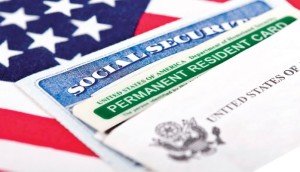Immigration on TV: Bordertown

Characters of Bordertown
On January 3, 2016 a new show, Bordertown, debuted on FOX’s Sunday Night Animation Domination. There are some famous voice over actors voicing the characters (such as Hank Azaria, Judah Friedlander, Alex Borstein) and Seth McFarlane is an executive producer. The show’s name conveys the setting and the subsequent storylines. It is set in the fictional town of Mexifornia, and it portrays the lives of people living in a town that is on the border of the United States and Mexico.
Given the show’s focus and name, the storylines revolve around immigration issues. In the pilot episode, the main conflict was that an American individual of Mexican descent (American born and American citizen) was deported to Mexico. The federal government passed a law, SB 7010. This is a play on the Arizona law from 2010, SB 1070, which was subsequently defeated in the US Supreme Court. The law in reality allowed for law enforcement to demand immigration paperwork proving legal status from persons they believed to be suspicious and not with legal status. That same conflict played out in the show and represented a main tension of the episode.
Another interesting twist to the show is that one of the main characters, Bud, is an American man who works for the Border Patrol. He is dedicated to protecting the border from smuggling and unauthorized migrants. Bud lives next door to Ernesto, a Mexican man, and his family. Their neighborliness can be tense, given their beliefs and circumstances.
The show probably will not be an accurate depiction of immigration laws and enforcement. However, it does provide an interesting narrative with a unique setting of Mexifornia. The main characters have backgrounds and situations that will place them in differing camps on immigration views. They will likely give voice to various views on immigration, many of which are likely to be politically relevant. The show is certainly timely and its views and portrayal of immigration in the United States are a small but important sliver of the immigration system.

